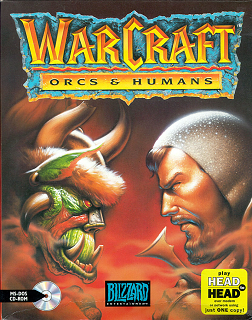
Warcraft: Orcs & Humans is a real-time strategy game (RTS) developed and published by Blizzard Entertainment, and published by Interplay Productions in Europe. It was released for MS-DOS in North America on 15 November 1994, and for Mac OS in early 1996. The MS-DOS version was re-released by Sold-Out Software in 2002.
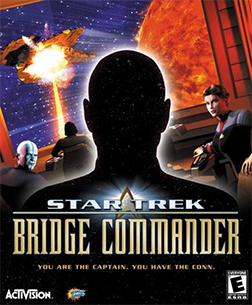
Star Trek: Bridge Commander is a space combat simulation video game for Microsoft Windows, developed by Totally Games and published by Activision in 2002, based in the Star Trek universe.
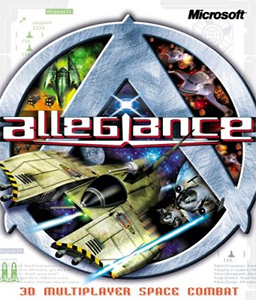
Allegiance is a multiplayer online game initially developed by Microsoft Research. It is notable for providing a mix of real-time strategy and player piloted space combat gameplay.

Freelancer is an American space trading and combat simulation video game developed by Digital Anvil and published by Microsoft Game Studios. It is a chronological sequel to Digital Anvil's Starlancer, a combat flight simulator released in 2000. The game was initially announced by Chris Roberts in 1999, and following many production schedule mishaps and a buyout of Digital Anvil by Microsoft, it was eventually released in March 2003.

Giants: Citizen Kabuto is a third-person shooter video game with real-time strategy elements. It was the first project for Planet Moon Studios, which consisted of former Shiny Entertainment employees who had worked on the game MDK in 1997. Giants went through four years of development before Interplay Entertainment published it on December 7, 2000, for Microsoft Windows; a Mac OS X port was published by MacPlay in 2001, and the game was also ported to the PlayStation 2 later that year.
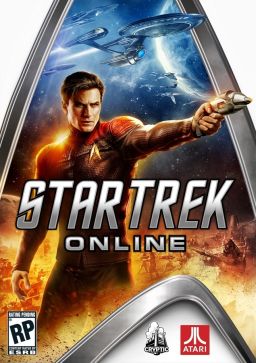
Star Trek Online is a massively multiplayer online role-playing game developed by Cryptic Studios based on the Star Trek franchise. The game is set in the 25th century, 30 years after the events of Star Trek: Nemesis. Star Trek Online is the first massively multiplayer online role-playing game within the Star Trek franchise and was released for Microsoft Windows in February 2010. At launch, the game required a game purchase and a recurring monthly fee. In January 2012, it relaunched with a tier of free-to-play access available. After a public beta testing period, a version of the game was released for OS X in March 2014. Due to technical issues with the port, support for OS X ended in February 2016. It was later released on PlayStation 4 and Xbox One in September 2016. The game has received several expansions since release and has gotten mixed reviews from critics.

Too Human is an action role-playing game developed by Silicon Knights and published by Microsoft Studios. It was released in August 2008 for the Xbox 360. The game's story is a science-fictional futuristic retelling of Norse mythology that portrays the Æsir, the Norse gods, as cybernetically enhanced humans, tasked with protecting mankind from the onslaught of Loki's army of machines. The player takes the role of the Norse god Baldur, who is less cybernetic than the other gods thus being "too human".
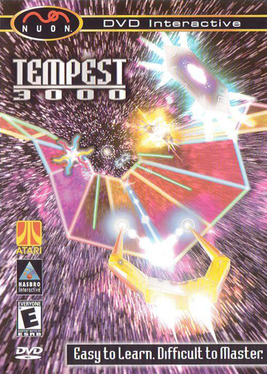
Tempest 3000 is a tube shooter video game developed by Llamasoft for the Nuon. It was published by Hasbro Interactive in North America on December 13, 2000, and Europe on March 2001. It is a follow-up to Tempest 2000, an updated remake of Dave Theurer's arcade game Tempest (1981). The player controls a claw-shaped blaster, shooting at enemies and obstacles, scoring points, and surviving multiple levels. The game modifies and builds upon the gameplay from Tempest 2000, introducing new enemies and mechanics.

Richard Farris Rashid is the founder of Microsoft Research, which he created in 1991. Between 1991 and 2013, as its chief research officer and director, he oversaw the worldwide operations for Microsoft Research which grew to encompass more than 850 researchers and a dozen labs around the world.
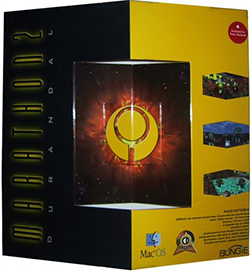
Marathon 2: Durandal is a first-person shooter video game, part of the science fiction Marathon Trilogy by Bungie. It was released on November 24, 1995. The game is mostly set on the fictional planet of Lh'owon, homeworld of the S'pht, and once again the player takes the role of a shipboard security officer from the Marathon. This is the only game in the series to be officially released for Windows and Xbox 360 XBLA in addition to the Mac. The unofficial Aleph One community enhancement, built on engine source opened by Bungie in 1999, allows the game to be played on many other platforms. The entire game including assets was released for free to the public by Bungie in 2005, now commonly bundled for distribution with Aleph One.

Cosmic Rift was a two-dimensional massively multiplayer video game designed by lead programmer Jeff Petersen. It is based in a science fiction universe wherein players can fly from an overhead view one of 13 spaceships, each with their own strengths and unique weapons, in a variety of gaming zones each with a different objective.
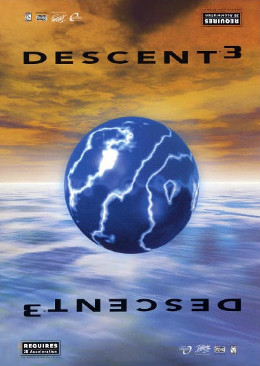
Descent 3 is a first-person shooter video game developed by Outrage Entertainment and published by Interplay Entertainment. It was originally released for Microsoft Windows in North America on June 17, 1999. Descent 3 is the third game in the Descent video game series and a sequel to Descent II. The game takes place in a science fiction setting of the Solar System where the player is cast as Material Defender, a mercenary who must help an organization known as the Red Acropolis Research Team to stop robots infected by an alien virus.

Lost Planet: Extreme Condition is a third-person shooter video game developed and published by Capcom for Xbox 360, Microsoft Windows and PlayStation 3. The game was released in Japan in December 2006 and worldwide in January 2007. Originally intended to be an Xbox 360 exclusive, it was later ported and released for Microsoft Windows in June 2007 and PlayStation 3 in February 2008.
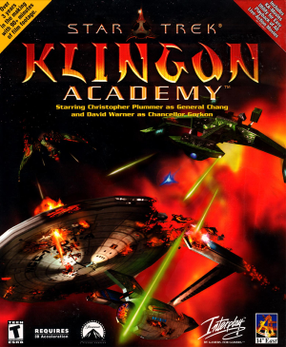
Star Trek: Klingon Academy is a space flight simulator video game developed by 14 Degrees East, an internal development house of publisher Interplay Entertainment. The game follows a young Klingon warrior named Torlek as he attends the Elite Command Academy, a war college created by General Chang to prepare warriors for a future conflict with the United Federation of Planets. Christopher Plummer and David Warner reprised their respective roles as Chang and Gorkon for the production of Klingon Academy.

Grudge Warriors is a car combat video game released by Take-Two Interactive on April 27, 2000. The game retailed for the low price of $9.99, a response by Take-Two to the recent decision of Sony to drop PlayStation licensing fees. Similar to the earlier PlayStation title Twisted Metal, players control a powerful tank-like armored vehicle, which they used to destroy enemy vehicles, weapons, and generators, solve puzzles, and collect tokens to upgrade their weapons. There are a total of twenty-three missions, and the game allows two players to battle each other in split screen multiplayer.
Gene Ball is a computer science researcher and computer programmer.
Online games are video games played over a computer network. The evolution of these games parallels the evolution of computers and computer networking, with new technologies improving the essential functionality needed for playing video games on a remote server. Many video games have an online component, allowing players to play against or cooperatively with players across a network around the world.

Star Trek: Voyager – Elite Force is a first-person shooter video game developed by Raven Software and published by Activision. The game was originally released on September 15, 2000 for Windows and Mac OS. A port for Mac OS developed by Westlake Interactive and published by Aspyr Media was released on November 20, 2002. Elite Force was ported to the PlayStation 2 by Pipe Dream Interactive and published by Majesco Entertainment on December 11, 2001.
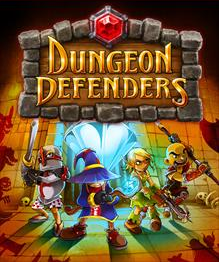
Dungeon Defenders is a hybrid multiplayer video game developed by Trendy Entertainment that combines the genres of tower defense and action role-playing game. It is based on a showcase of Unreal Engine 3 named Dungeon Defense. The game takes place in a fantasy setting where players control the young apprentices of wizards and warriors and defend against hordes of monsters. A sequel titled Dungeon Defenders II was released in 2015.

Gears of War is a media franchise centered on a series of video games created by Epic Games, developed and managed by The Coalition, and owned and published by Xbox Game Studios. The franchise is best known for its third-person shooter video games, which has been supplemented by spin-off video game titles, a DC comic book series, seven novels, a board game adaptation and various merchandise.


















